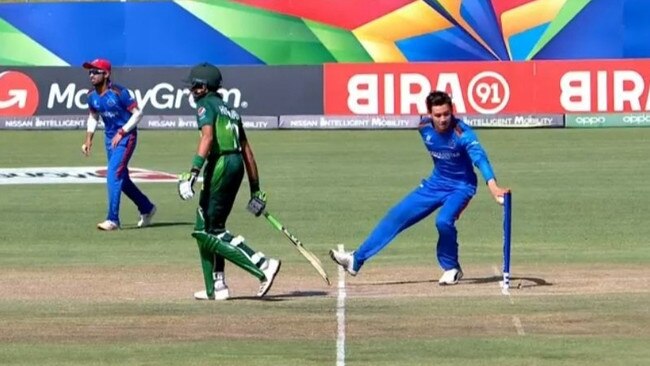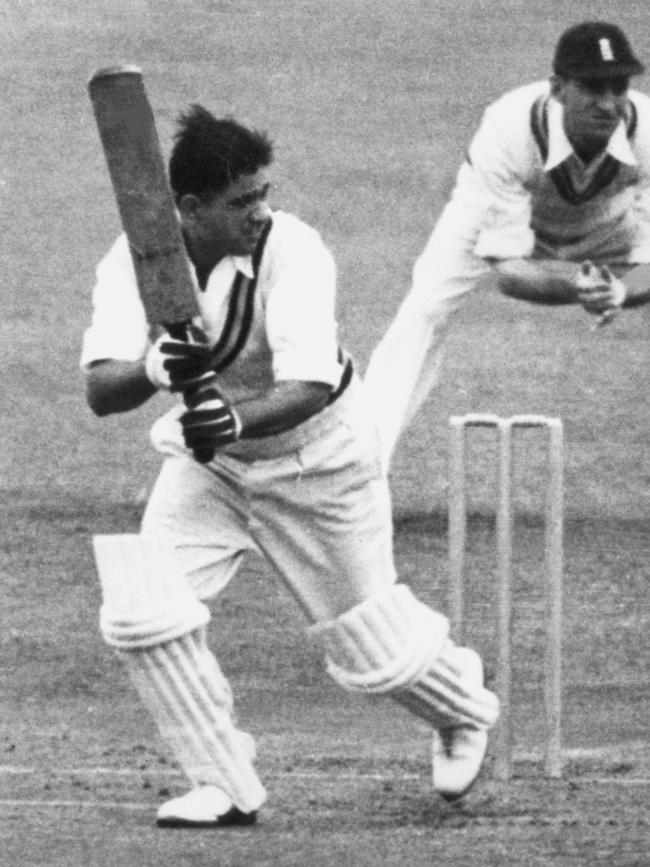It’s time cricket adapted the mankad rule to include a first warning following latest Under 19 World Cup controversy
The use of a ‘first warning’ must be introduced into the laws of cricket to stamp out mankading before it becomes normalised as a tactic to dismiss batsmen, especially at amateur level, writes Grady Hudd.

Cricket
Don't miss out on the headlines from Cricket. Followed categories will be added to My News.
- ‘Bollocks’: World erupts over mankad controversy
- Subscriber rewards: Win Adelaide Oval Stadium Club memberships
For the sake of cricket, please, please it’s time we introduced a first warning into the mankad law and end what is one of the biggest blights on the game before it gets out of control.
The debate around the unique mode of dismissal was reignited when in the Under 19 World Cup Super League Quarter Final on Friday, Pakistan batsman Mohammad Huraira fell victim to the frowned-upon ploy when he was run-out by Afghanistan bowler Noor Ahmad.
For those playing along at home, mankading is when a bowler stops from delivering the ball in order to run-out the nonstriker who has left his crease too early – often referred to as ‘backing up’ too far down the pitch.
The term is derived from an incident during India’s 1947/48 tour of Australia where visiting bowler Vinoo Mankad, a left-arm spinner, ran out Bill Brown in the manner described above.
‘Mankading’, as it has been referred to ever since, is seen by many as not playing within the ‘spirit of the game’, especially if the batsman doesn’t first receive a warning from the bowler.
🚨 MANKAD 🚨
— Cricket World Cup (@cricketworldcup) January 31, 2020
Noor Ahmed used the Mankad mode of dismissal to see off Pakistan's well-set Muhammad Hurraira for 64!
What do you make of it? 👇 #U19CWC | #AFGvPAK | #FutureStars pic.twitter.com/DoNKksj1KN
The MCC – who are the custodians of the laws of cricket – gave some clarity on mankading last year after Indian Ravi Ashwin controversially dismissed Englishman Jos Buttler using the tactic during their Indian Premier League match.
Ashwin infamously used mankading while playing for India against Sri Lanka in 2012.
“This law is essential. Without it, nonstrikers could back up at liberty, several yards down the pitch and a law is needed to prevent such action,” the MCC statement read.
“The crux of the issue is when the nonstriker can safely leave his/her ground, and what the bowler can do to effect this form of dismissal without courting controversy.
“To clarify, it has never been in the laws that a warning should be given to the nonstriker and nor is it against the spirit of cricket to run out a nonstriker who is seeking to gain an advantage by leaving his/her ground early.”


While mankading may be seen as a somewhat acceptable practice at the elite level – although, the jury is still out on that judging by the negative reactions of many current and former international players – it certainly shouldn’t be encouraged, or even normalised.
In a way, the fact there is a taboo around the tactic is good for the game.
This couldn’t be truer at amateur level, where mankading is nearly impossible to adjudicate.
Unlike the top flight competitions, the average Saturday afternoon match doesn’t have the luxury of television replays, where footage can be slowed down and rewound in order to reach a decision.
Most of the time it’s the opposition team that umpires the game while they are batting.
It’s hard enough getting an LBW given out by an opposition umpire (and trust me, I’ve seen some absolutely plumb decisions turned down during my playing days), let alone expecting them to watch for front foot balls and whether the batsman is backing up too far at the same time.
The last thing you want to see is weekend heroes deciding they want to be the next Ravi Ashwin, or Noor Ahmad, and trying to mankad batsmen at every opportunity.
What would be even worse would be seeing it creep into junior cricket.
All it does is slow the game down, and create unnecessary extra tension between the batting and fielding side – which in amateur cricket runs the risk of turning ugly very quickly.
No-one wants that.
Those arguing that mankading is ‘perfectly fine’ or that ‘the batsman should just stay in their crease’ are forgetting the ‘spirit of cricket’ element by which most people play the game.
While said spirit doesn’t require a bowler to warn a batsman before mankading them, the general unwritten rule adopted by most cricketers I’ve played with and against is that you do get one warning.
Those who say the ‘spirit of cricket’ is a load of nonsense probably haven’t played enough to truly understand what it means.
You see some pretty unusual things on the cricket field from time to time, and often you’re required to just use some common sense.
Let me provide an example.
I played in a game only the other week where a batsman had defended a delivery into the pitch off the back foot, only to have the ball bounce straight up at him.
In a reflex reaction, he swatted the ball down into the turf with his hand.
By the letter of the law had we appealed, he could’ve been out handling the ball had we mounted a strong enough case that the ball was set to land back on the stumps.
We all let him know of his error, absolutely, but we allowed him to keep batting – and he reciprocated his thanks.
Sure, appealing and having him out would’ve been within the laws of the game, but it certainly wouldn’t have been within the spirit of cricket.
And as repayment from the cricket Gods for our show of sportsmanship, the bloke got an absolute stinker of an LBW from his teammate who was umpiring a short while later.
A perfect display of cricket’s equilibrium in full effect ¬ it’s a thing of beauty.

Regardless of what many people say, those who truly love playing the game understand it’s not always about playing to the letter of the law, but playing the game the right way.
If you’ve warned a batsman and they still proceed to leave their crease early, by all means, mankad the life out of them – you’ve given them their chance.
But doing so without first giving the customary head’s up just isn’t cricket.
It’s about time the MCC removed this grey area and adapted the rule to include the use of a first warning to level the playing field for batsman and bowler, and end the debate over mankading once and for all.
I can guarantee you’ll see a lot less instances of it being used, which can only be good for cricket.
Originally published as It’s time cricket adapted the mankad rule to include a first warning following latest Under 19 World Cup controversy
